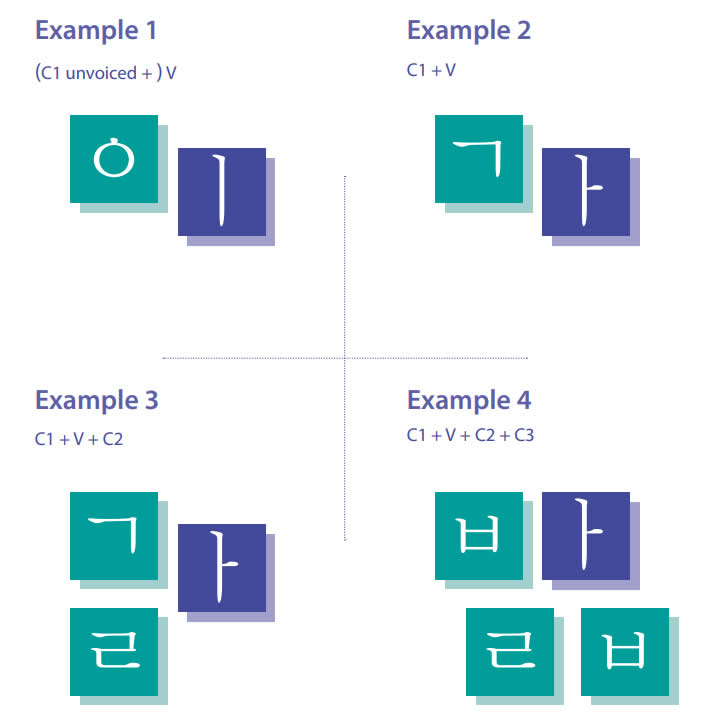Language/Korean/Pronunciation/How-to-write-Korean-syllables
< Language | Korean | Pronunciation
Jump to navigation
Jump to search
Rate this lesson:
How to write Korean syllables
=syllables
Korean writing is conceived in blocks representing syllables, each composed of an initial consonant, a (medial) vowel or a diphthong, and finally an ending composed of one or two consonants known as batchim. Consider the following examples:
받침
Some pronunciation change if followed by this particle. The word batchim (받침, literally meaning “basis, support”) refers to consonants at the conclusion of a syllable. Not all syllable blocks have one; for instance, those in examples 1 and 2 don’t have any. Example 3 has one, and example 4 has a double batchim.
Videos
Video: Making Korean Syllables and Words - YouTube
Video: Korean Syllables & Reading 받침 (batchim)


